Although I do not consider myself an art enthusiast, I appreciate and enjoy observing artworks, as they evoke a certain vibe in me. So, I love visiting the National Museum of Tokyo and the National Museum of Western Art in Ueno, Tokyo. They are excellent museums, and it’s worth visiting. However, today I want to show you a kind of hidden gems around the museums in Ueno.
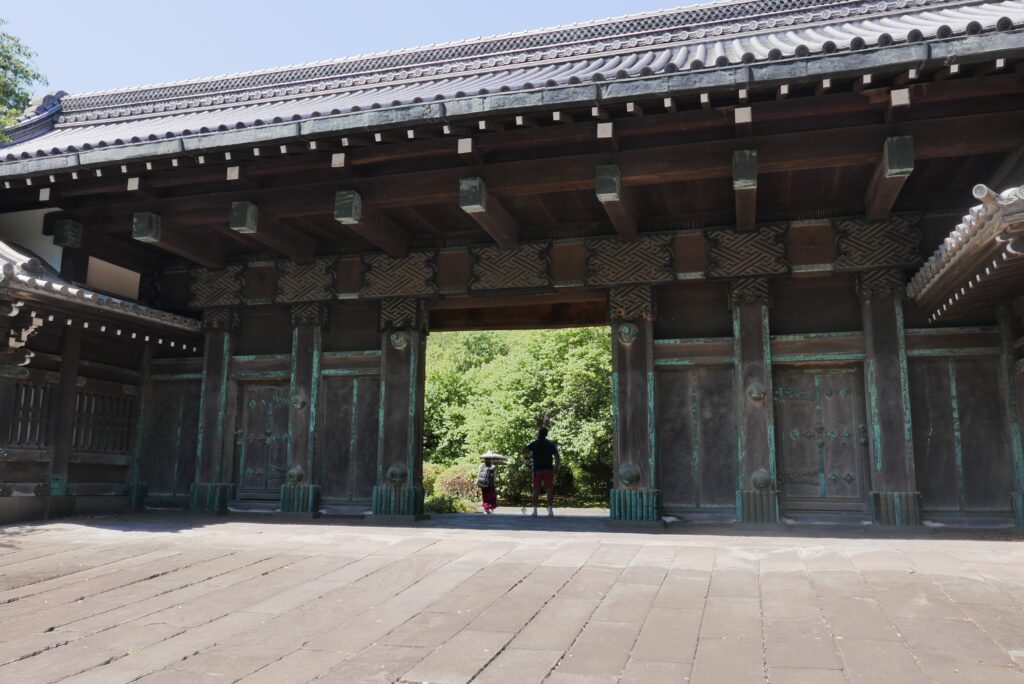
After you enjoyed the Japanese arts and traditional cultures at the National Museum, turn to the right just after the main exit gate, and walk along the museum fence on Byobusaka Street.
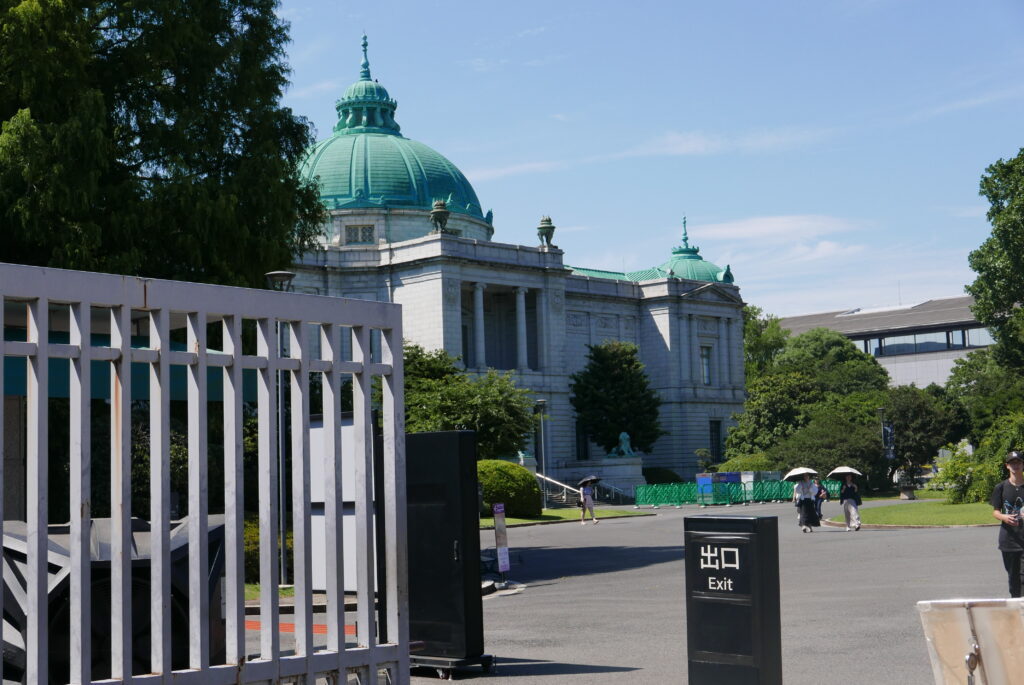
Then, you will find a massive wooden old gate standing on the right side. It’s the gate of a samurai lord’s mansion, called Kuro Mon, the black gate in English. It has the typical Irimoya-style roof, which is one of the highest-ranked styles of roof, which only high-class families or temples were entitled to have during the samurai era. For more details about the Irimoya-style, please refer to the following website: https://www.aisf.or.jp/~jaanus/deta/i/irimoyazukuri.htm
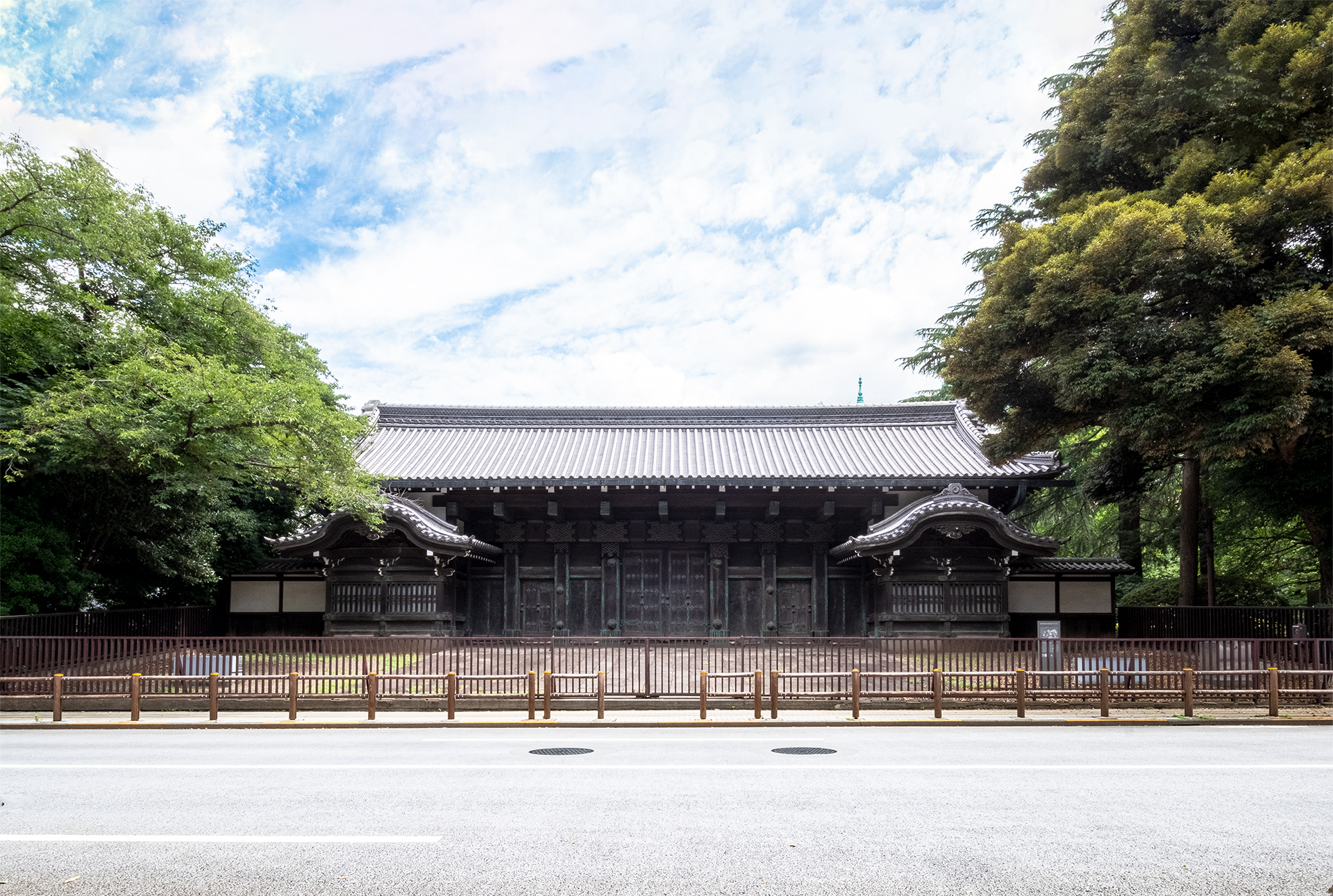
The owner of the gate was Ikeda, a member of one of the samurai families that were highly loyal to the Tokugawa Shogunate. No wonder Ikeda has such a great gate in front of his house. One significant feature of this gate is the pair of security huts attached to it. The gate is so massive that it provides ample space to accommodate guard posts within its structure. It was not here. It originally stood near the Edo Castle, now the Imperial Palace. In 1954, it was moved into the National Museum of Tokyo as an artifact of the traditional samurai housing structures.
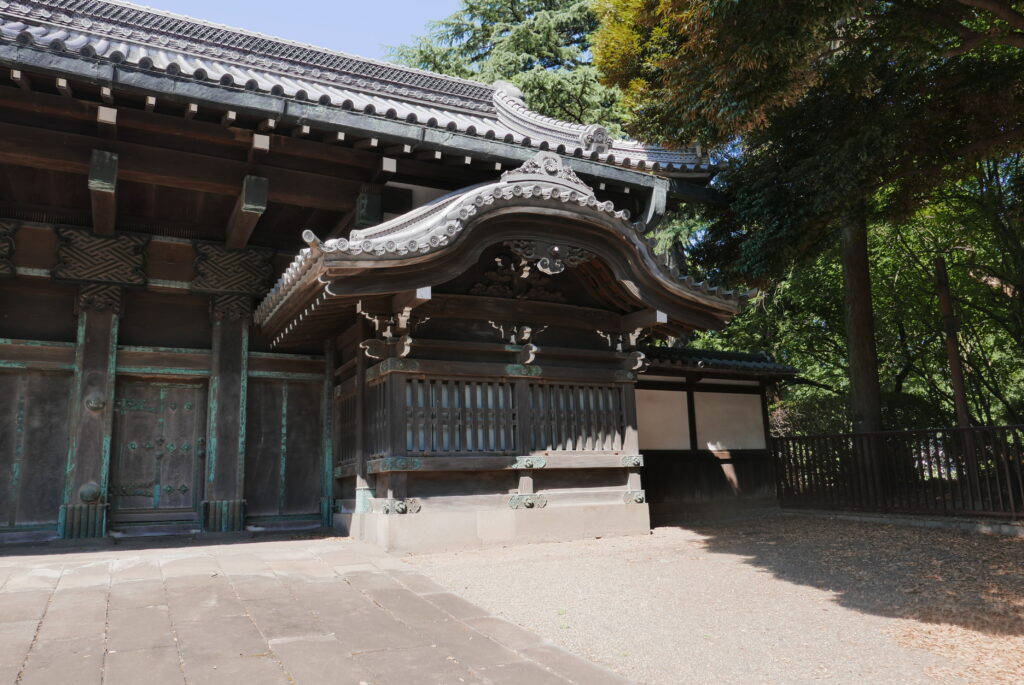
I admire the intricate and elegant design of the gingerbread under the roof. It showcases a distinctly Japanese style that is rarely seen outside of Japan. This design evokes a powerful and proud sense reminiscent of the samurai lords.
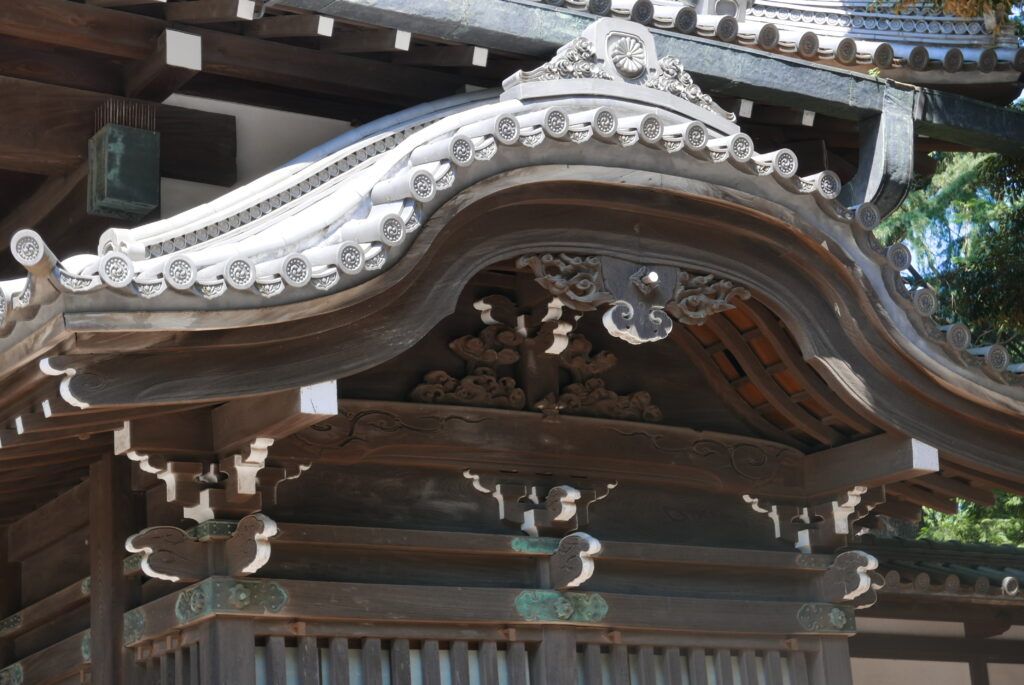
The gate is open on weekends and public holidays in Japan, and you can walk through it from the inside of the National Museum of Tokyo.
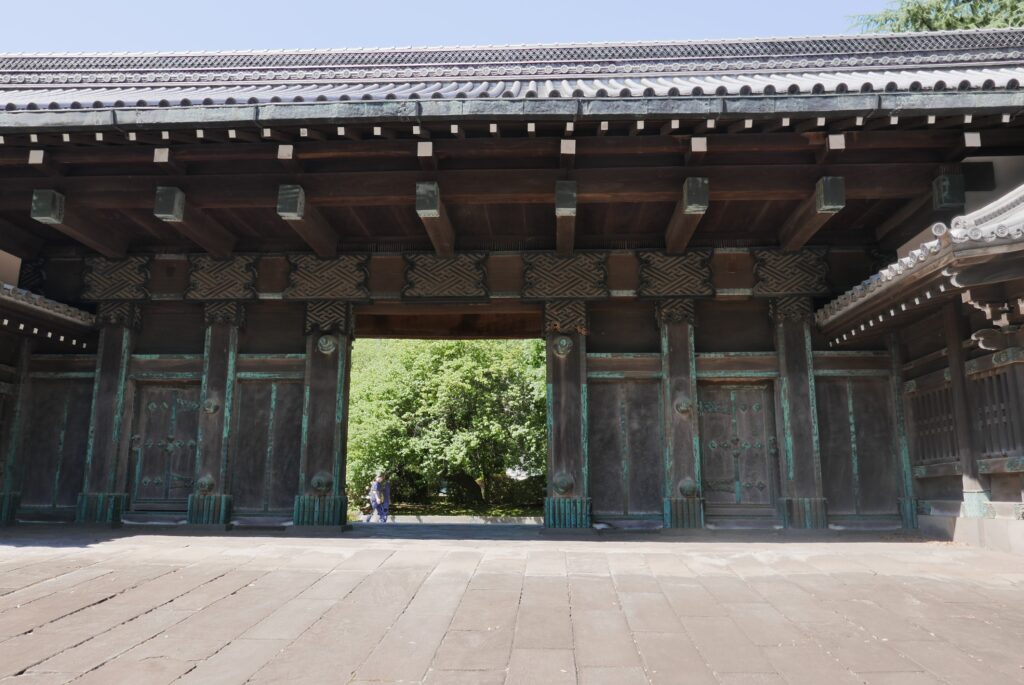
Walking straight along the Byobusaka Street for a while, you unintentionally enter the Tokyo University of Arts area, where talented music and art students work hard to develop their skills and senses to be great artists. On the right side, it’s the Faculty of Music, and the Faculty of Arts is on the left. The street begins at a small hall featuring a unique blend of modern Western and traditional Japanese architectural styles, serving as a music hall where music students regularly showcase their performances. Vertually, they are semi-professional artists whose performance has been appreciated by art enthusiasts. If you are lucky, you may enjoy traditional Japanese music, such as Gagaku, Imperial music, played by students who want to be imperial music performers.
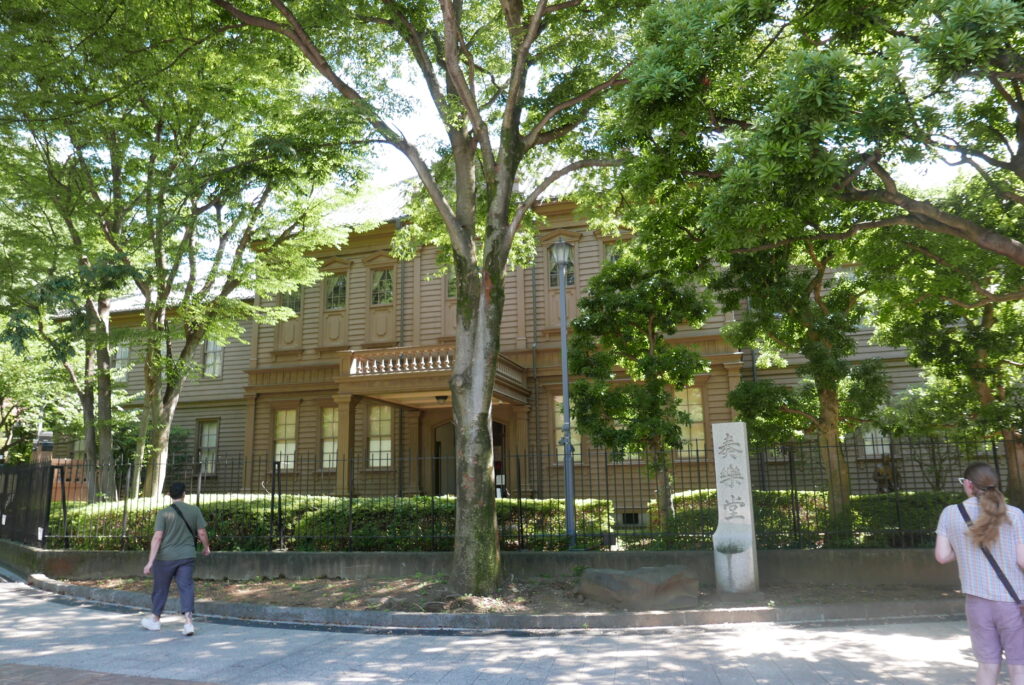
At the end of the Tokyo University of Arts, please turn to the left and walk for a few minutes. Then, you find a small temple, Gokokuin of Kan-ei-ji temple. It’s a branch temple of Kan-ei-ji Temple, which has survived the Great Earthquake in 1925 and the intensive air bombing during WW2 and still maintains some of the original structures. It was established in 1625 by Tenkai, a renowned Buddhist monk, supported by the Shogun, Tokugawa Ieyasu, the founder of the samurai government, called Bakufu.
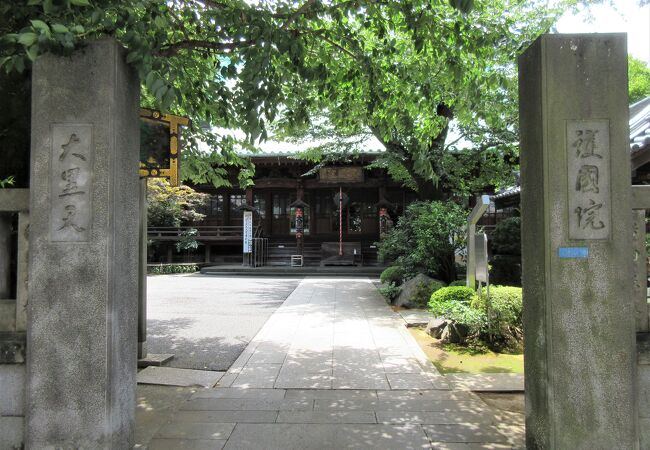
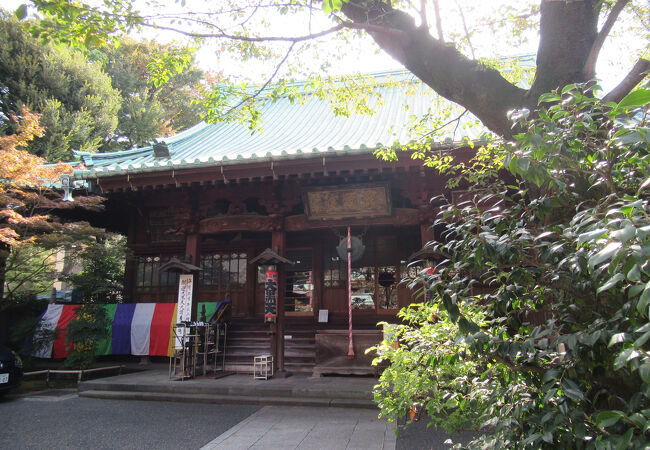
The Gokokuin temple is so generous and open-minded that it allows everyone to enter the main hall to pray to Daikoku-ten, which is one of the seven famous deities in the samurai era. The Daikoku-ten is believed to bring prosperity to people.
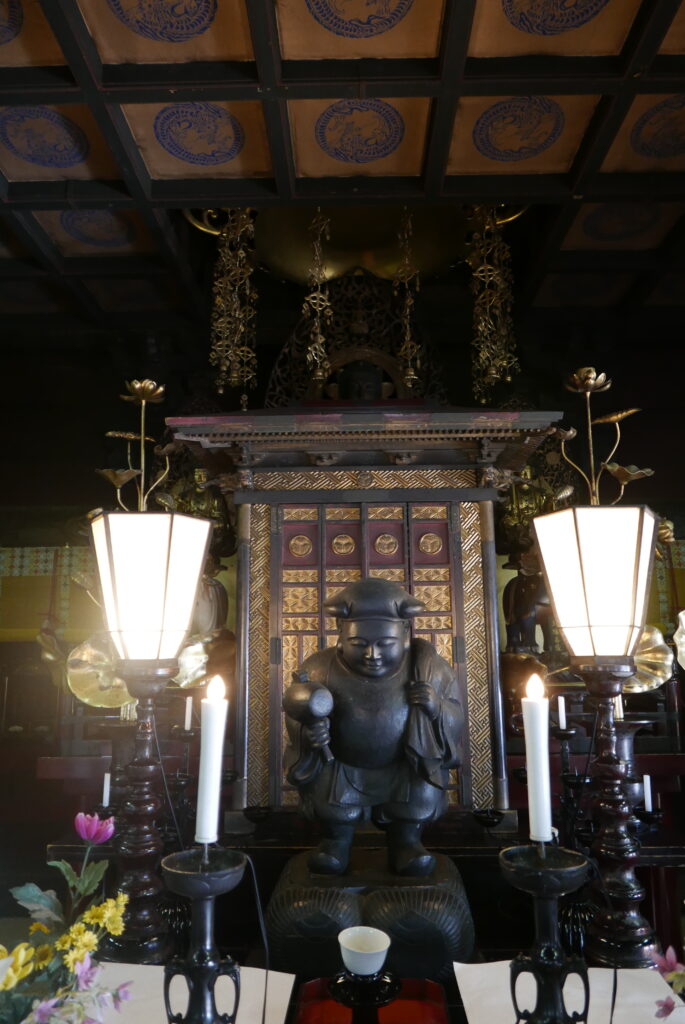
The Gokokuin temple also allows us to take pictures inside the main hall. It is pretty rare for a Buddhist temple to give such permission to everyone, not only its followers. Please remind that you are not always allowed to enter the hall. If there is a religious ceremony on the day you visit, the temple prohibits you from going into the hall.
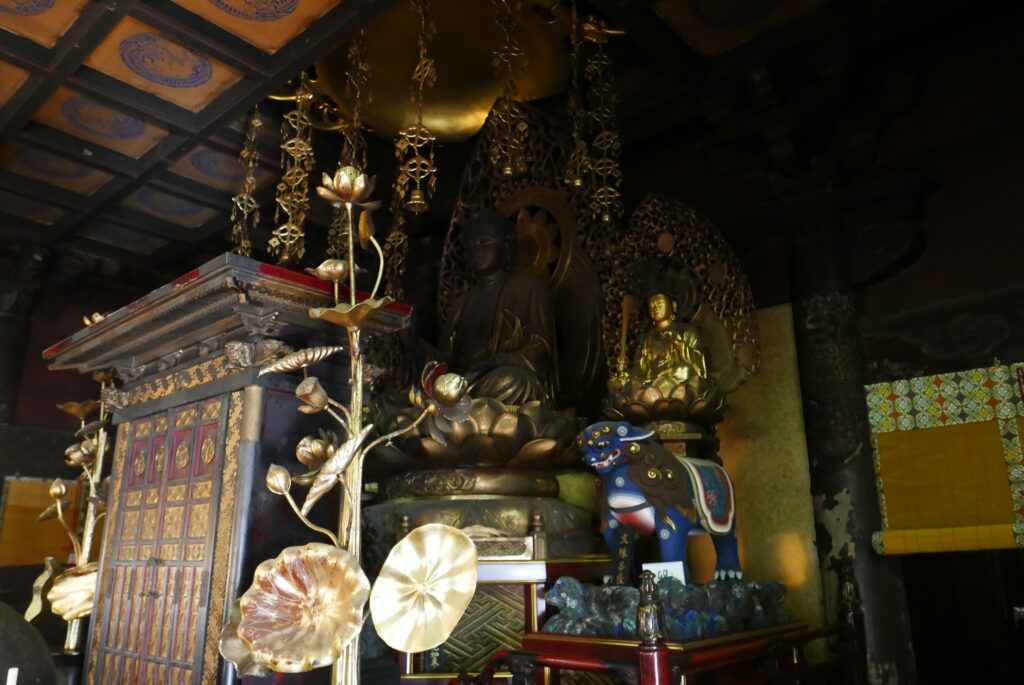
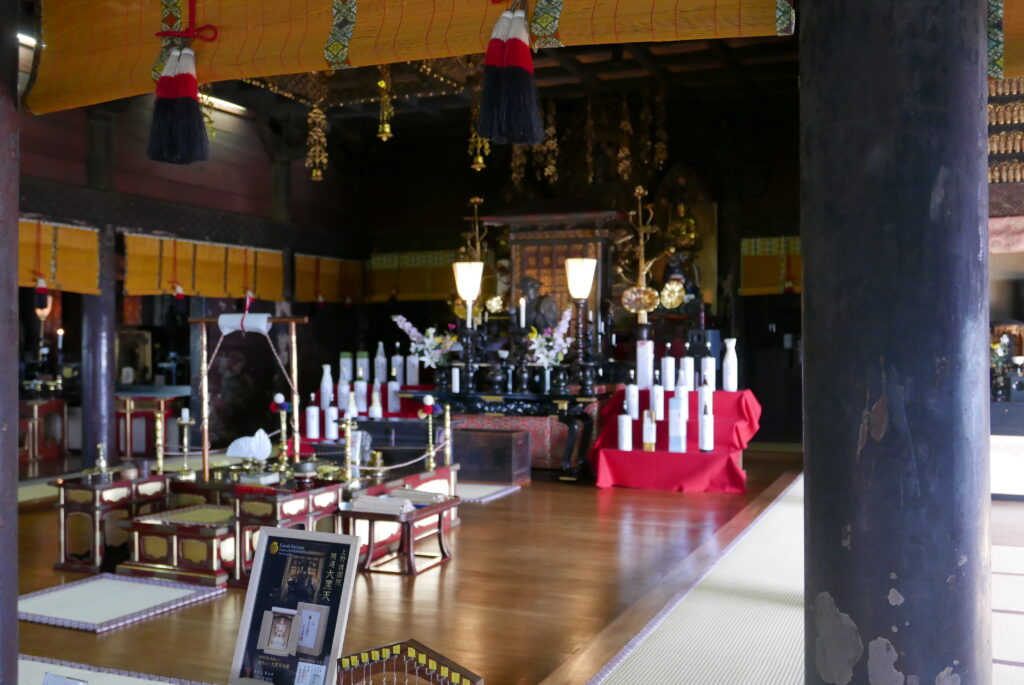
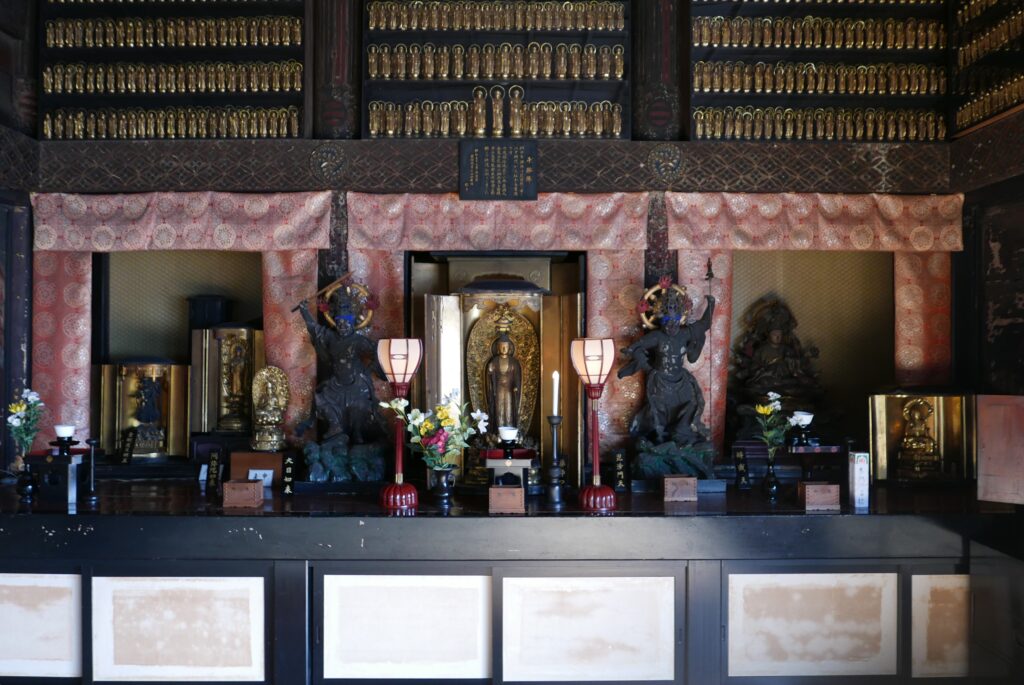
I also recommend that you visit the National Museum of Western Art. European and American visitors may not be interested in Western art because they can enjoy similar exhibitions in their own countries. However, what I recommend is not the art, but its unique structure, which features a seismic isolation system designed to reduce the impact of earthquakes. After the great earthquake in the Kobe area in 1995, which devastated Kobe city, killing about 6,500 people and leaving many more missing, the Japanese government found that the construction safety regulations and standards at that time were not strict enough to protect people and their properties. Then the museum was told that it would collapse entirely if an earthquake as strong as the 1995 earthquake hit Tokyo.
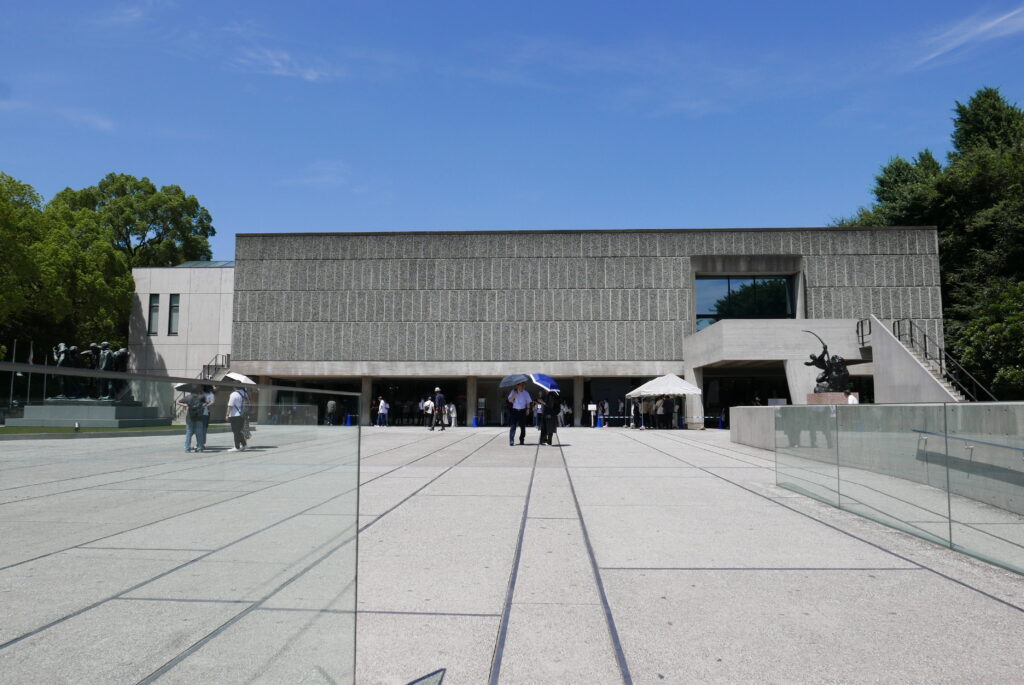
The National Museum of Western Art was designed by Le Corbusier, a renowned French architect whose designs are recognized as a UNESCO World Heritage Site, and the museum is part of it. It features a pilotis style that consists of several columns without walls. It creates a wide and free space on the ground floor, but it is vulnerable to earthquake waves. So, the Japanese government needed to develop a new construction technology to protect the UNESCO World Heritage Site urgently. Eventually, the National Institute of Construction and construction companies in Japan invented a seismic isolation rubber system that can absorb the earthquake impacts. Please go down to the basement floor. There is a small window that shows you the system.
Look at the black rubber between the bottom of the column and the base construction. That is the Japanese technology and idea to survive severe natural disasters. I believe it is also an essential part of our culture.
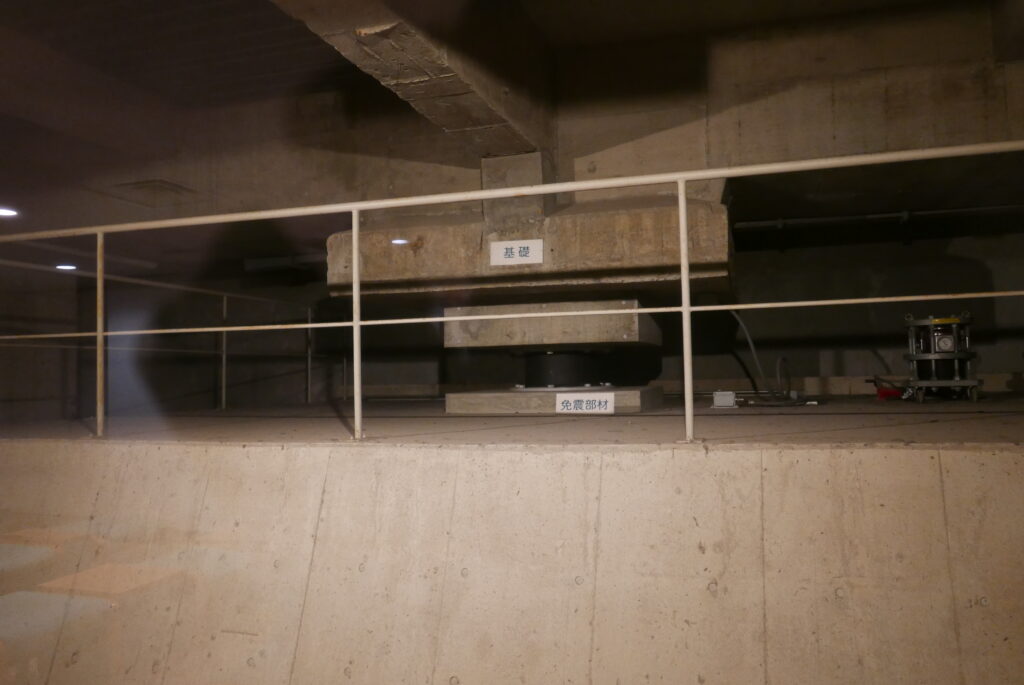
You don’t need to worry excessively about the problems caused by the earthquake in Japan. According to the report issued by the Ministry of Land, Transport, Infrastructure, and Tourism, the reinforcement of critical buildings and structures with anti-earthquake measures, such as increasing walls, reinforced columns with rapping it with metal plates, installing bracing reinforcement and seismic isolation systems, has already reached 93% and is expected to be 100% by 2030. Additionally, almost all Japanese people are also willing to assist international tourists during natural disasters in our country. I have never heard of foreigners living in Japan being left behind during the past disasters.
Thank you for reading this blog post. There are still lots of hidden gems in my pocket, so please contact me via the “Contact me!” link below if you want to enjoy something unique in Tokyo. I am willing to explore backstreets in Tokyo with you.
I post new content each month to share interesting experiences and amazing sites. Please click the links to stay updated on my X (formerly Twitter) and Instagram.
X (former Twitter): https://x.com/ToruGuide
Instagram: https://www.instagram.com/toruhigaki/
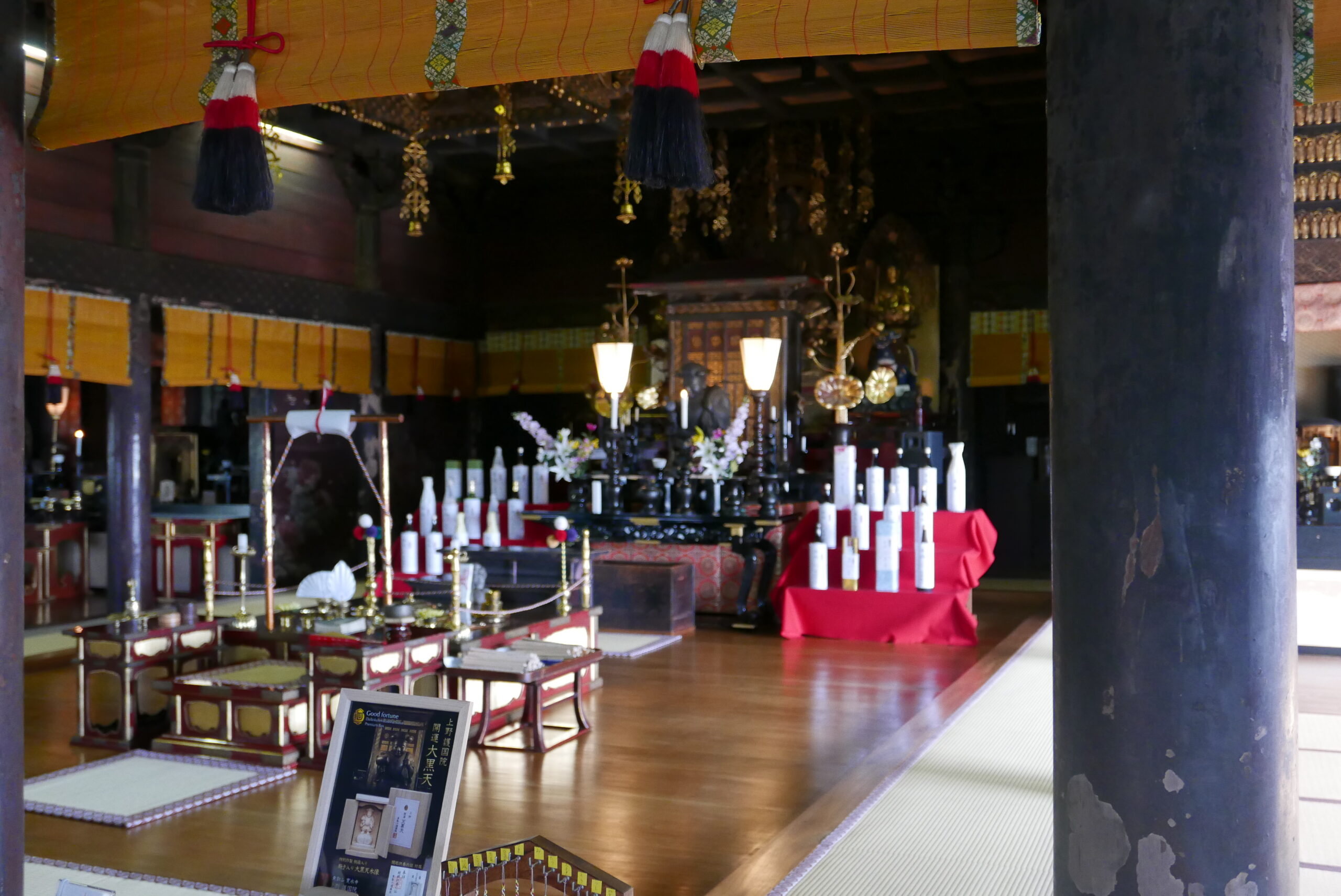


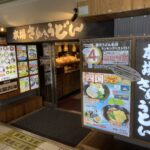
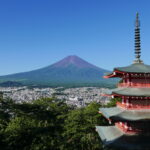
Comment